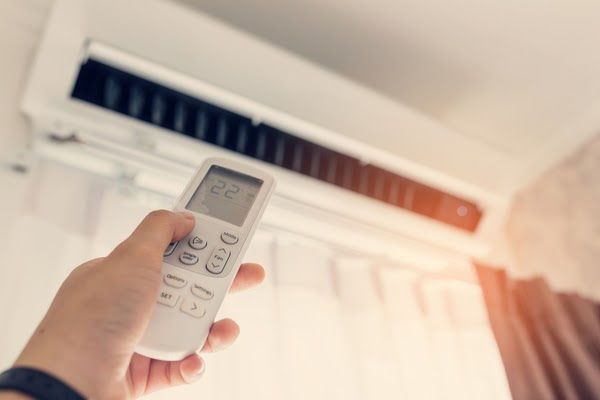Home Heating In Canada
- Olga Gudziuk

- Mar 28, 2023
- 3 min read


Different Types of Home Heating
Let us look at the most familiar heating systems out there and weigh their pros and cons.
Furnace

Furnaces function with the power of natural gas, propane, furnace oil, or electricity and are a type of widely-used home heating system. They work by heating air that is then pushed evenly into the surroundings with a blower motor's help via air ducts. + Pros: It’s an economical heating option Energy efficiency of a reliable furnace goes up to 98.5% It can last anywhere from 15 years to over 30 years. - Cons: Blower fans of the furnace can be noisy, particularly in older versions.
Boiler

A boiler works by boiling water to produce steam. This steaming water is circulated through the house in pipes fixed discretely in every room. These pipes lead to radiators, floor systems or coils that further help to warm up the house. The operating mechanism of a boiler can be natural gas, propane, heating oil, or electricity.
+ Pros:
It’s easy to control which rooms to heat, which helps control heating costs
Energy efficiency of a boiler can go as high as 90%
Boilers tend to last 15 to 30 years.
- Cons:
Installation costs can be high
Requires a bare minimum temperature to be maintained to keep the pipes from freezing up.
Heat Pump

Heat pumps channel heat from the surrounding atmosphere to make the house warmer. In order to accomplish that, they make use of either electricity or geothermal energy.
Heat pumps can be used to condition the air even in summer, which makes the system is an all-rounder for all seasons.
+ Pros:
Provides home heating as well as cooling
Heating seasonal performance factor is 6.8 to 10
Can last for around 15 years.
- Cons:
Installation costs for some models can be high.
Electric Heating
An electric heating system converts electricity to heat, warming up your house.
+ Pros:
Energy efficiency skyrockets between 95 to 100%
Can easily last for more than 20 years
One of the more comparatively affordable options.
- Cons:
Can become costly if you’ re switching from a combustive heating system.
Wood Burning Appliance
Upgraded systems have quickly replaced this old-school heating system. However, it has avoided extinction as some households still use it. As suggested by its name, this home heating system comes in the form of fireplaces, wood or pellet stoves, etc. The power source is the wood used for burning and the heat produced.
+ Pros:
Burning wood has a way of creating a look that complements a cozy environment
Can be cheap, depending on the availability of wood in your area.
- Cons:
If there isn’t a clear ‘flue’, there’s a potential hazard of carbon monoxide poisoning.
Benefits of investing in a good quality heating system:
Reduction in utility expenses
No more air leaks (advanced heating systems are equipped with filters to refresh the circulating air for better breathing quality, creating a more ambient level of heat)
Work Faster
Minimal maintenance
Two-thirds of all Canadian homes are heated with forced-air furnaces; of those, two-thirds are fired by natural gas, and the remainder by oil or propane or heated electrically. These systems are popular for a number of reasons, primarily their ability to heat a house quickly: turn up the temperature on your thermostat, and seconds later warm air comes blowing out of the registers. The ductwork can also be used for air-conditioned cooling in summer, and a forced-air furnace can easily be equipped to multi-task as an air filter, humidifier and/or fresh-air ventilator. On the fuel side, the gas line required for a gas-fired furnace will also provide fuel for your stove and barbecue, heat your hot water, and even supply a warm, soothing fireplace with the flick of a switch. On the downside, the air blowing out of your vents can feel drafty and may circulate dust. The ducts can also carry noise from the furnace and blower throughout the house.
Electric heat is the second most popular heating option in the country, with the highest concentration in hydro-rich Quebec. Natural Resources Canada estimates that 60 per cent of homes in la belle province are heated electrically. A small percentage of forced-air and hydronic systems are electrically powered but, more often than not, electric heat is generated in baseboards and recessed floor- or wall-mounted heaters. Electric heat is unique in that it is considered to be 100 per cent efficient–all the energy consumed by the heaters is converted to heat. (This does not mean electric heat is environmentally benign. Large-scale hydro dams flood river valleys, displacing wildlife, and the reservoirs behind them produce methane, a greenhouse gas).
Hydronic heating systems use hot water or steam to provide warmth. In older urban homes, that’s usually a boiler with hot-water rads in each room. There are other options to consider, but they make up very small slices of the home-heating pie. Canadians haven’t, for example, entirely abandoned the original heat source, fire, but only about five per cent of homes have a woodstove as their primary supplier of heat. Wood heating requires the most hands-on maintenance–i.e., splitting, stacking and stoking–but it’s also a good backup during power blackouts. There are also hybrids such as outdoor wood-fired furnaces that provide heat for hydronic systems, but wood is most popular as a supplement to electric heat.
And in discussing alternatives, we’d be remiss not to mention solar panel and wind-generator systems that can be tied into heating systems.
Air-source systems are the most common on the Canadian market, with over 700,000 installed units across Canada.
Any home, no matter when it was built, can be energy-efficient. Modern construction standards demand greater energy efficiency in new homes, but older homes can be upgraded to improve their energy performance. And the people living in these homes can be energy-efficient in their habits, too.

A combination heating and air conditioning unit is a great option for those who wish to save energy and money over time. In a nutshell, a typical hybrid heating system is one that combines an air-to-water source heat pump (ASHP) with a gas or oil boiler. A single smart controller then manages the entire hybrid heat pump setup. “That means the boiler and the heat pump can talk to each other,” says Henk van den Berg, strategic manager – heating and renewables for Daikin UK. “You input your gas and electric tariffs. The controller then decides to run the heat pump, boiler or – in a truly joined up system – both of them.” When the ambient temperature outside is really cold, the system will probably use the boiler. But when it’s milder, say 7°C+, most or all of the work will be done by the air source heat pump.



Comments